Discover 11 hidden attractions, cool sights, and unusual things to do in El Dorado (United States). Don't miss out on these must-see attractions: El Dorado Confederate Monument, John Newton House, and First Presbyterian Church. Also, be sure to include Union County Courthouse in your itinerary.
Below, you can find the list of the most amazing places you should visit in El Dorado (Arkansas).
Table of Contents
El Dorado Confederate Monument
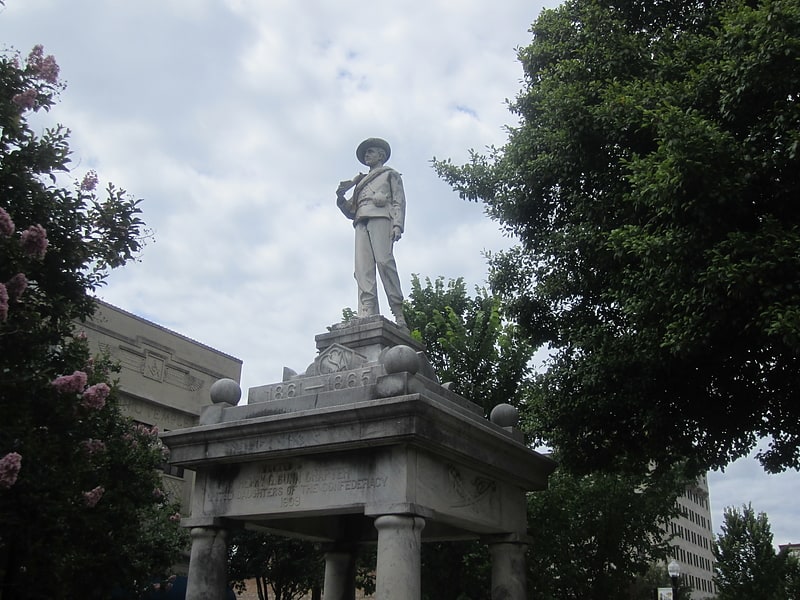
Sculpture in El Dorado, Arkansas. The El Dorado Confederate Monument is located on the grounds of the Union County Courthouse in El Dorado, Arkansas, near the corner of North Main and South Washington Streets. It consists of a statue of a Confederate Army soldier in mid-stride, mounted on top of a temple-like structure supported by four cannon-shaped Ionic columns. The columns support a lintel structure bearing inscriptions on three sides, above which is a tiered roof with cannonballs at the corners. The temple structure is 15 feet high, and 10 feet square; the statue measures 76 inches by 28 inches by 28 inches. Both the statue and the temple are constructed of gray/blue striated marble. Inside the temple structure is a water fountain which has two copper flamingos.
The monument was built in 1910 at a cost of over $2,800, and was paid for by the local chapter of the United Daughters of the Confederacy. It is believed to be the first fountain-style Confederate monument in the South. The front (south) side of the monument is inscribed "CSA 1861 - 1865 / ERECTED BY THE HENRY G. BUNN CHAPTER / UNITED DAUGHTERS OF THE CONFEDERACY / 1909". The north side is inscribed "'TRUTH CRUSHED TO EARTH SHALL RISE AGAIN.' / 'EVEN DEATH CANNOT SEVER THE CORDS OF MEMORY.'" The western lintel reads "'IN HONOR OF THE CONFEDERATE SOLDIERS / OF UNION COUNTY, ARK.'". The eastern lintel has a pair of crossed swords on it.
The monument was listed on the National Register of Historic Places in 1996. It was included in the El Dorado Commercial Historic District in 2003.[1]
John Newton House
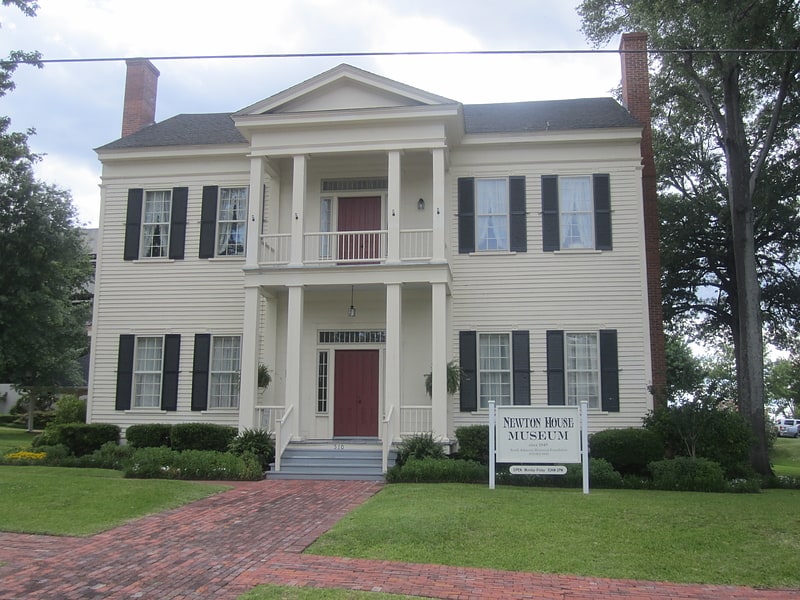
Museum in El Dorado, Arkansas. The Newton House Museum, also known as the Matthew Rainey House, is a historic house museum at 510 North Jackson Street in El Dorado, Arkansas, United States. The house was built sometime between 1843 and 1853 by Matthew Rainey, El Dorado's first settler, and is the oldest building in the city. It is a vernacular two-story wood-frame structure with a central hall and rooms on either side. It stands at the edge of a 4-acre parcel, having been moved from its center in 1910.
The house was listed on the National Register of Historic Places in 1974, and included in the Murphy-Hill Historic District in 2007. It is now owned by the South Arkansas Historical Foundation, which operates it as a museum.[2]
Address: 510 N Jackson Ave, 71730-5809 El Dorado
First Presbyterian Church
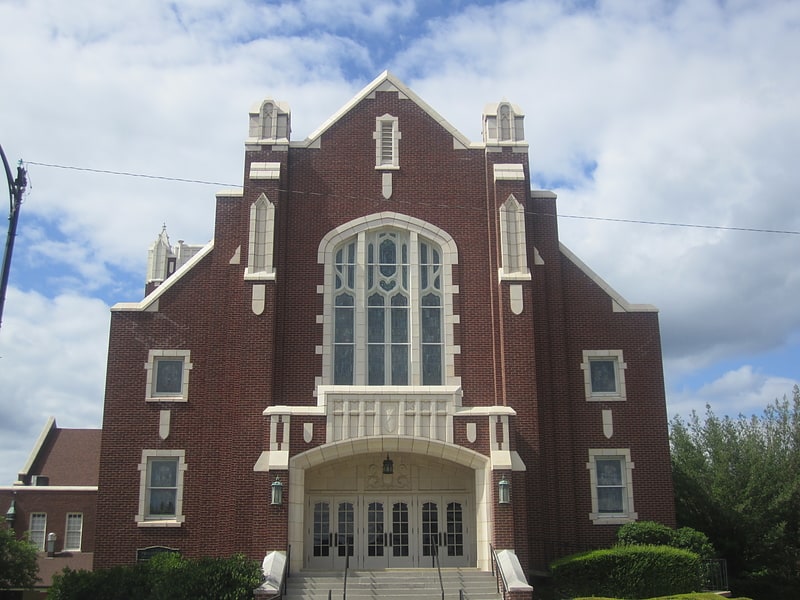
Church in El Dorado, Arkansas. The First Presbyterian Church is a historic church at 300 E. Main in El Dorado, Arkansas. The single story brick building was constructed in 1926 for a congregation which was organized in 1846. The Collegiate Gothic building was built during El Dorado's 1920s boom occasioned by the discovery of oil, and its ensuing rapid growth. It was designed by the architectural firm R. H. Hunt and Associates.
The building was listed on the National Register of Historic Places in 1991.[3]
Address: 300 E Main St, 71730-6114 El Dorado
Union County Courthouse

Courthouse in El Dorado, Arkansas. The Union County Courthouse is a courthouse in El Dorado, Arkansas, United States, the county seat of Union County, built in 1927. It was listed on the National Register of Historic Places in 1983. The courthouse was built in the Classic Revival and Greek Revival styles by Mann & Stern and anchors the center of Union Square.[4]
Address: 101 N. Washington, El Dorado
Rialto Theatre
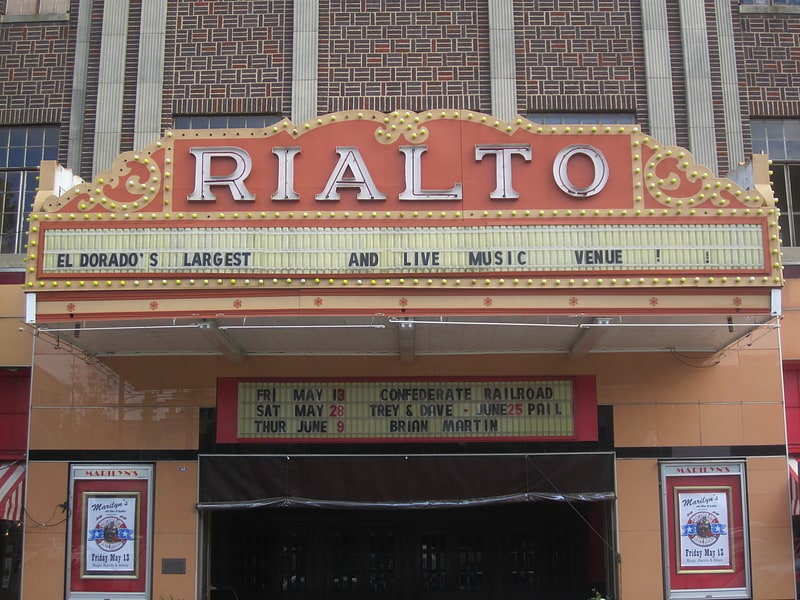
Theater in El Dorado, Arkansas. The Rialto Theatre is a historic performing venue at 117 East Cedar Street in downtown El Dorado, Arkansas. Built in 1929 during El Dorado's oil boom years, the theater is one of the best local examples of Classical Revival architecture, and is one of the largest and most elaborately decorated performing spaces in southern Arkansas. It was designed by the local firm of Kolben, Hunter and Boyd, and seats 1400. Its main entrance has Egyptian Revival details, and is flanked by storefronts. The brick of the front facade is laid in a basketweave pattern, and is topped by a stone frieze, cornice, and parapet. The interior of the theater is elaborately decorated. The theater was owned for many years by the McWilliams family. It was closed from 1980 to 1987, and was operated as a three-screen movie theater until 2007. It has since been reconverted for use as a live performance space after being completely empty for several years and serving as a bar for a time.
The theater was listed on the National Register of Historic Places in 1986, and included in the El Dorado Commercial Historic District in 2003.[5]
Masonic Temple
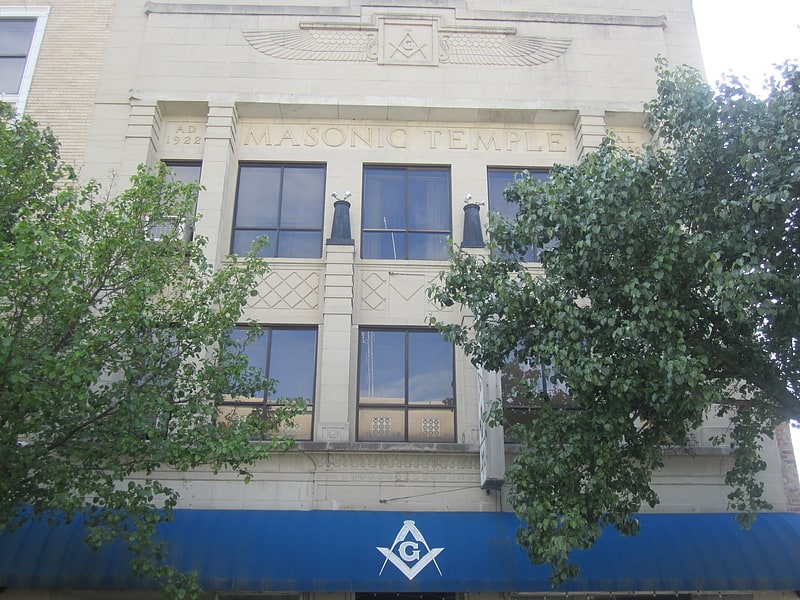
The Masonic Temple of El Dorado, Arkansas is located at 106-108 North Washington Street, on the west side of the courthouse square. The four-story masonry building was built in 1923–24 to a design by Little Rock architect Charles S. Watts. It is one of a small number of buildings in Arkansas with Art Deco styling influenced by the Egyptian Revival. This particular styling was likely influence by the 1922 discovery of the Tomb of Tutankhamun.
The building was listed on the National Register of Historic Places in 2001, and included in the El Dorado Commercial Historic District in 2003.[6]
Municipal Building
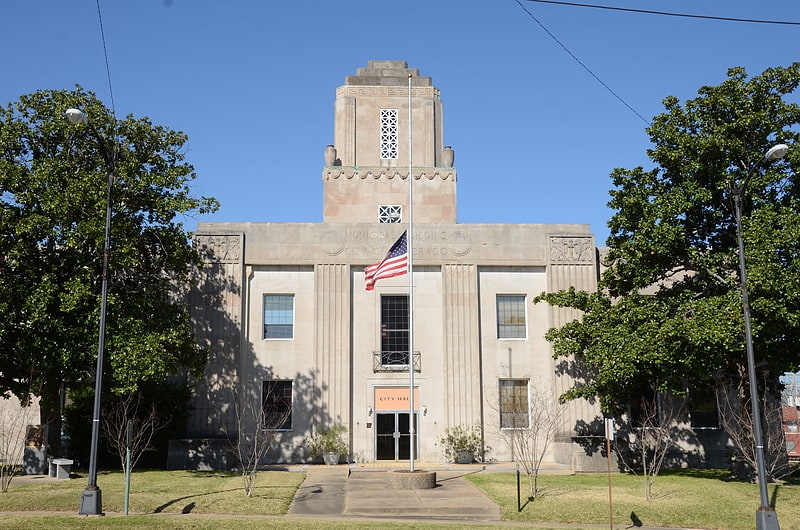
The Municipal Building, or City Hall, of El Dorado, Arkansas is located at 204 North West Street.[7]
Bank of Commerce

The Bank of Commerce building is a historic commercial building at 200 North Washington Street in El Dorado, Arkansas. The Classical Revival two story brick building was constructed in 1919–20, and is one of the few buildings in El Dorado's downtown that retains its historical facade from that period. The building was renovated in the 1940s and 1950s, actions that gutted its interior, but only covered over the main facade with a new layer of brick, and left the secondary southern facade intact. In the early 1980s the building's exterior was restored to its 1920s appearance.
The building was listed on the National Register of Historic Places in 1982. It was included in the El Dorado Commercial Historic District in 2003.[8]
Exchange Bank
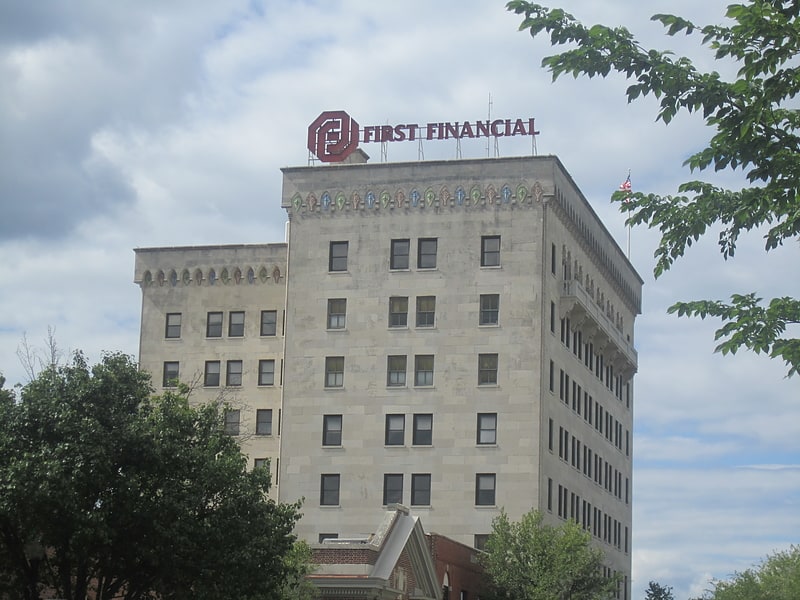
Building in El Dorado, Arkansas. The Exchange Bank building is a historic commercial building at Washington and Oak Streets in El Dorado, Arkansas. Built in 1926–27, the nine story building was the first skyscraper in Union County, and it was the tallest building in El Dorado at the time of its listing on the National Register of Historic Places in 1986. It was designed by the Little Rock firm of Mann & Stern, and is an eclectic mix of Venetian-inspired Revival styles. It was built during El Dorado's oil boom, and housed the headquarters of Lion Oil. It was included in the El Dorado Commercial Historic District in 2003.[9]
W. F. & Estelle McWilliams House
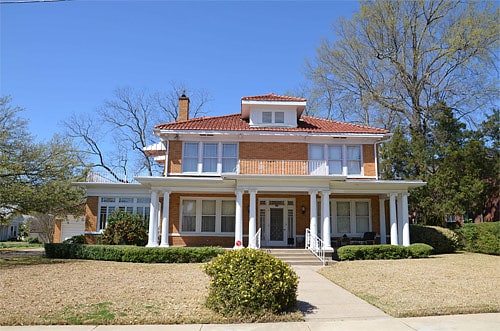
The W.F. & Estelle McWilliams House is a historic house at 314 Summit Avenue in El Dorado, Arkansas. The two story brick house was built in 1922 for William and Estelle McWilliams, early in El Dorado's oil boom, which was prompted by the discovery of oil in 1921. McWilliams was a prominent local businessman who operated a number of retail businesses, was a local bank director, and built the Rialto Theatre. The McWilliams house is a stylistically eclectic combination of Craftsman, Classical Revival, and Mission/Mediterranean styling. Based on stylistic evidence, it may have been designed by the Little Rock firm of Kolben, Hunter and Boyd.
In 1967 Claude and Glynn Calahan purchased the home and raised their children, Gordon Calahan and Melanie Calahan Walz, in it. The Calahan's purchased the home from The First Methodist Church of El Dorado in 1967. It was the church parsonage and many weddings were held in the large living room of the home.
The Calahan's lived in the home until 2018. Glynn Calahan, who owned an antique business, filled the home with antiques suitable for the style of the home.
The home and property are now owned by South Arkansas Community College and have been incorporated into the college campus which now surrounds the home.
The house was listed on the National Register of Historic Places in 2013.[10]
Griffin Auto Company Building

Historical landmark in El Dorado, Arkansas. The Griffin Auto Company Building is a historic automobile sales and service facility at 117 East Locust Street in El Dorado, Arkansas. It is a single story structure built out of reinforced concrete, with a full basement. The main floor housed the sales and showroom area, and the service area was in the basement. The building also includes a filling station area, which is the most decorative portion of the otherwise utilitarian structure. This area has pilastered columns that frame the automobile entry area, and the walls above the shelter entrance is decorated with bands of terra cotta and brick ornamentation. The Griffin Auto Company was established by three brothers from North Carolina, beginning as a livery stable business in 1899 before branching out into the new world of the automobile in 1915. They moved out of the building in 1960, since when it has been used by a variety of other sales-oriented businesses.
The building was listed on the National Register of Historic Places in 2001, and was included in the El Dorado Commercial Historic District in 2003.[11]